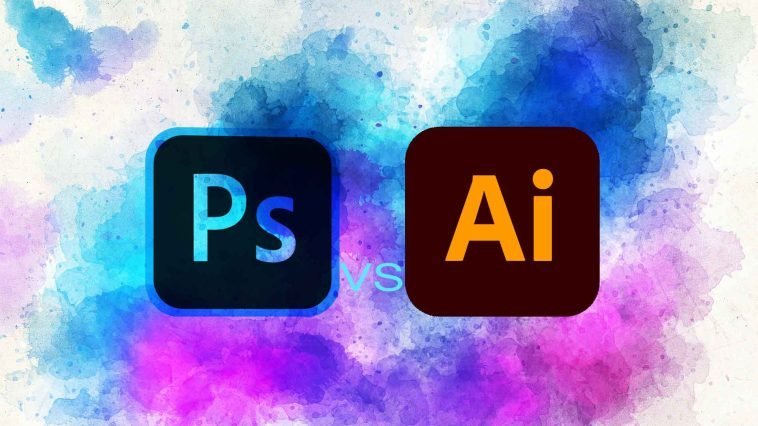Introduction.
Posters are a powerful medium for communicating messages, promoting events, or showcasing artwork.
Whether you’re creating a poster for a concert, a movie, an exhibition, or a business promotion, a well-designed poster can captivate audiences and leave a lasting impression.
Adobe Photoshop offers a wide range of tools and features that allow you to unleash your creativity and design visually stunning posters. In this guide, we will take you through the step-by-step process of designing a poster in Photoshop.
Designing a poster involves careful consideration of layout, typography, imagery, and visual elements.
We will start by discussing the importance of planning and conceptualizing your poster design.
Understanding the purpose of the poster, identifying the target audience, and defining the key message will guide your design choices and ensure that your poster effectively communicates its intended purpose.
So, let’s dive in and uncover the techniques that will elevate your design skills and enable you to create outstanding posters with Adobe Photoshop.
How Do I Design a Poster In Photoshop?
Whether you’re designing a poster for a concert, a movie, an exhibition, or a business promotion, creating a visually striking and well-designed poster is essential to grab attention and leave a lasting impression.
With Adobe Photoshop, you have a versatile and powerful tool to bring your poster ideas to life. In this article, we will guide you through the step-by-step process of designing a poster in Photoshop.
1. Define the Purpose and Audience.
Before diving into Photoshop, take the time to define the purpose of your poster and identify your target audience. Consider the key message or theme you want to convey through the poster.
Is it promoting an event, showcasing artwork, or advertising a product? Understanding the purpose and audience will guide your design choices and ensure that your poster effectively communicates its intended message.
2. Set Up Your Canvas.
Launch Adobe Photoshop and create a new document by going to the “File” menu and selecting “New.” Specify the dimensions for your poster, considering the size requirements for printing or digital display.
Ensure that you set the resolution to at least 300 pixels per inch (PPI) to maintain high-quality output.
3. Design the Layout.
Start designing the layout of your poster by considering the visual hierarchy and arrangement of elements.
Determine the placement of key information, such as the title, date, location, and any additional details relevant to your poster.
Experiment with different layouts, such as a centred composition, a grid-based structure, or an asymmetrical arrangement, to create visual interest and draw attention.
4. Select Fonts and Typography.
Choose fonts and typography styles that complement the overall design and align with the theme or message of your poster.
Select a font for the title that is eye-catching and reflects the tone of your poster. Use different font weights, sizes, and styles to create hierarchy and emphasis. Ensure that the fonts you choose are easily readable and legible, even from a distance.
5. Incorporate Images and Graphics.
Integrate images, graphics, or illustrations that enhance the visual appeal and reinforce the message of your poster.
Choose visuals that are relevant, high-quality, and align with your intended theme or purpose. Photoshop offers tools to resize, crop, and adjust images to fit your design.
Experiment with blending modes, opacity, or layer masks to integrate images seamlessly into your poster.
6. Apply Color and Styling.
Colour plays a vital role in the overall impact of your poster. Choose a colour scheme that aligns with your message or brand identity.
Experiment with different colour combinations to create visual interest and evoke the desired emotions or atmosphere.
Consider using gradients, textures, or patterns to add depth and visual appeal to your design. Maintain consistency in colour choices and styling throughout the poster to create a cohesive and professional look.
7. Fine-Tune and Refine.
Take the time to fine-tune your poster design. Pay attention to details, check for spelling or grammatical errors, and ensure that the layout is visually balanced.
Seek feedback from others or take a break and revisit your design with fresh eyes to make necessary refinements.
Make use of layers, adjustment layers, or smart objects to make non-destructive edits and easily experiment with different variations.
8. Prepare for Printing or Digital Sharing.
Once you are satisfied with your poster design, it’s time to prepare it for printing or digital sharing. If you plan to print the poster, make sure to set the colour mode to CMYK and use the appropriate bleed settings to avoid any white edges.
Save your design as a high-resolution PDF or TIFF file to maintain the quality of the artwork. If you plan to share the poster digitally, save it as a JPEG or PNG file and optimize it for web or social media use.
Conclusion.
Designing a poster in Photoshop allows you to unleash your creativity and create visually striking visuals that grab attention and effectively convey your message.
By following the step-by-step instructions in this article, you’ll be equipped with the knowledge and techniques to design outstanding posters.
Remember to define the purpose and audience, set up the canvas, design the layout, select fonts and typography, incorporate images and graphics, apply colour and styling, fine-tune your design, and prepare for printing or digital sharing.
With practice and experimentation, you’ll master the art of designing impactful posters that leave a lasting impression on your audience.






GIPHY App Key not set. Please check settings